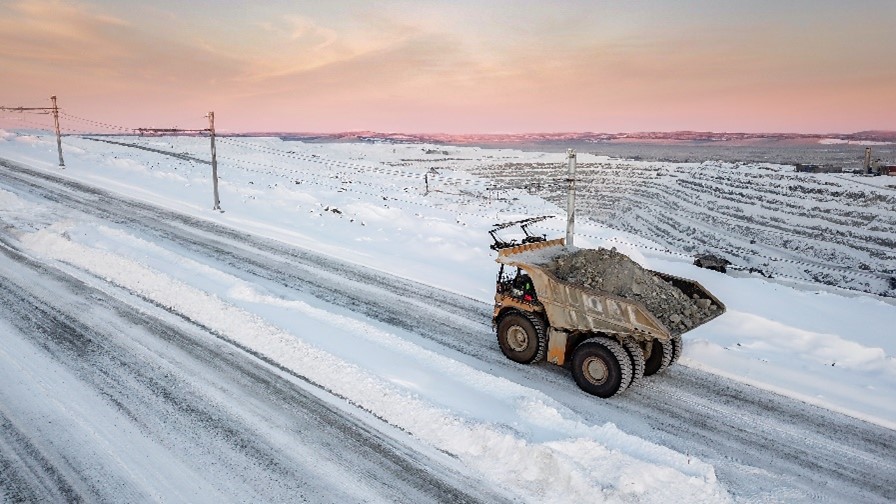DOWNLOAD THE MINING EXECUTIVE APP NOW

"Global Mining Descisions in Your Palms"
DOWNLOAD THE MINING EXECUTIVE APP NOW

"Global Mining Descisions in Your Palms"
“Mining is currently responsible for 4% to 7% of greenhouse gas (GHG) emissions globally. Scope 1 and Scope 2 CO2 emissions from the sector, those incurred through mining operations and power consumption, respectively amount to 1%, and fugitive-methane emissions from coal mining are estimated at 3% to 6%.”
David Pearce, Managing Director, and Principal Mining Engineer SRK Consulting.
Decarbonization on mines featured high on the agenda of a recent SRK Consulting global partners meeting in Johannesburg, with a special workshop being dedicated to this topic.
Mining is currently responsible for 4% to 7% of greenhouse gas (GHG) emissions globally. Scope 1 and Scope 2 CO2 emissions from the sector, those incurred through mining operations and power consumption, respectively amount to 1%, and fugitive-methane emissions from coal mining are estimated at 3% to 6%.
The significant level of these emissions reflects the potential for mining to create a positive legacy, and many of the world’s major miners have already set demanding targets for themselves. However, this rapid transformation is not without its challenges, and mining companies are reaching out proactively to find relevant and sustainable paths to decarbonization.
The industry has committed to investing many billions of dollars in implementing solutions. Identifying suitable solutions and designing the operation around these requirements will need both innovative thinking and extensive experience in mining operations.
SRK’s September workshop on decarbonization strategies was therefore another step in its continuous process of integrating its response capabilities. Leveraging its global network of experienced engineers and scientists, SRK brings clients a holistic approach involving various facets of mining.
There have been pioneering efforts by mines to switch their energy supply from fossil-fuelled sources to renewable energy. This will have a particular impact where a mine’s energy is currently being generated by burning coal, diesel, or gas.
Several remote mines have commissioned a combination of solar and wind power systems with battery capacity to extend utilization. Some mines in Australia are generating up to 60% of their power from renewable sources and are looking to increase this to ~80% by adding additional renewable capacity.

Electrifying mines’ truck haulage system is another potential strategy to decarbonize, as haulage can represent between 30% and 50% of emissions. Each large truck in an open pit application typically consumes 800,000 to 1 million liters of diesel a year, translating to between 2,200 and 3,000 tons of carbon dioxide. Available technologies include the trolley assist system, which was largely pioneered in South Africa, and in-pit crushing and conveying systems. These can reduce diesel consumption by 60-80%. However, implementing such solutions requires changing mine designs and plans. This is where SRK can provide the necessary insights, advice, and designs – to ensure that any technological changes will be suitable and effective.
Underground mines are adopting battery power in their trackless machinery as the haul distances underground tend to be shorter and flatter. An added benefit of battery power over diesel is the reduced energy needed for ventilation. Consequently, obtaining the full benefit of any investment in battery vehicles requires looking at the whole operation.
Underground coal mines have always been conscious of methane levels due to the safety risk through the traditional solution of diluting any emissions using ventilation now means the methane is too dilute to burn. SRK’s ventilation specialists in California are working on projects to develop solutions to cost-effectively destroy this methane. Other specialists are working with clients to measure emissions so that solutions can be targeted.
Ongoing reductions in emissions will require mine teams to work together in a more integrated way so that the solutions extend across different mine functions. For example, ore can be blasted finer to reduce the energy needed for crushing and grinding, or concentrate grade can be increased to reduce Scope 2 emissions from smelters. Alternative technologies such as preconcentration and high-pressure grinding rolls (HPGRs) are available but may only be feasible at the outset of a new project or expansion. Optimal haul road design and maintenance can also contribute to efficiency by minimizing rolling resistance and travel distances – all of which reduce diesel consumption.
Mine waste can also sequester carbon – tailings from nickel, platinum, and diamond mines extract CO2 from the air to create inert carbonates which are then buried. Understanding the weathering mechanism and how changes may be required to the tailings deposition process without impacting either tailings stability or water use requires a team of specialists, which we have.
In summary, the mining industry has embraced the challenge to reduce emissions and is investing significant amounts of money and effort in new solutions. The “low-hanging fruits” of switching from coal and diesel to renewables are being plucked. However, this will not achieve the targets mining companies have set themselves and further efforts are planned. SRK is ready to play its part in helping clients evaluate the opportunities to evolve their operations and reduce emissions.
SRK is an independent, global network of over 45 consulting practices on six continents. Its
experienced engineers and scientists work with clients in multi-disciplinary teams to deliver
integrated, sustainable technical solutions across a range of sectors – mining, water, environment, infrastructure, and energy.
